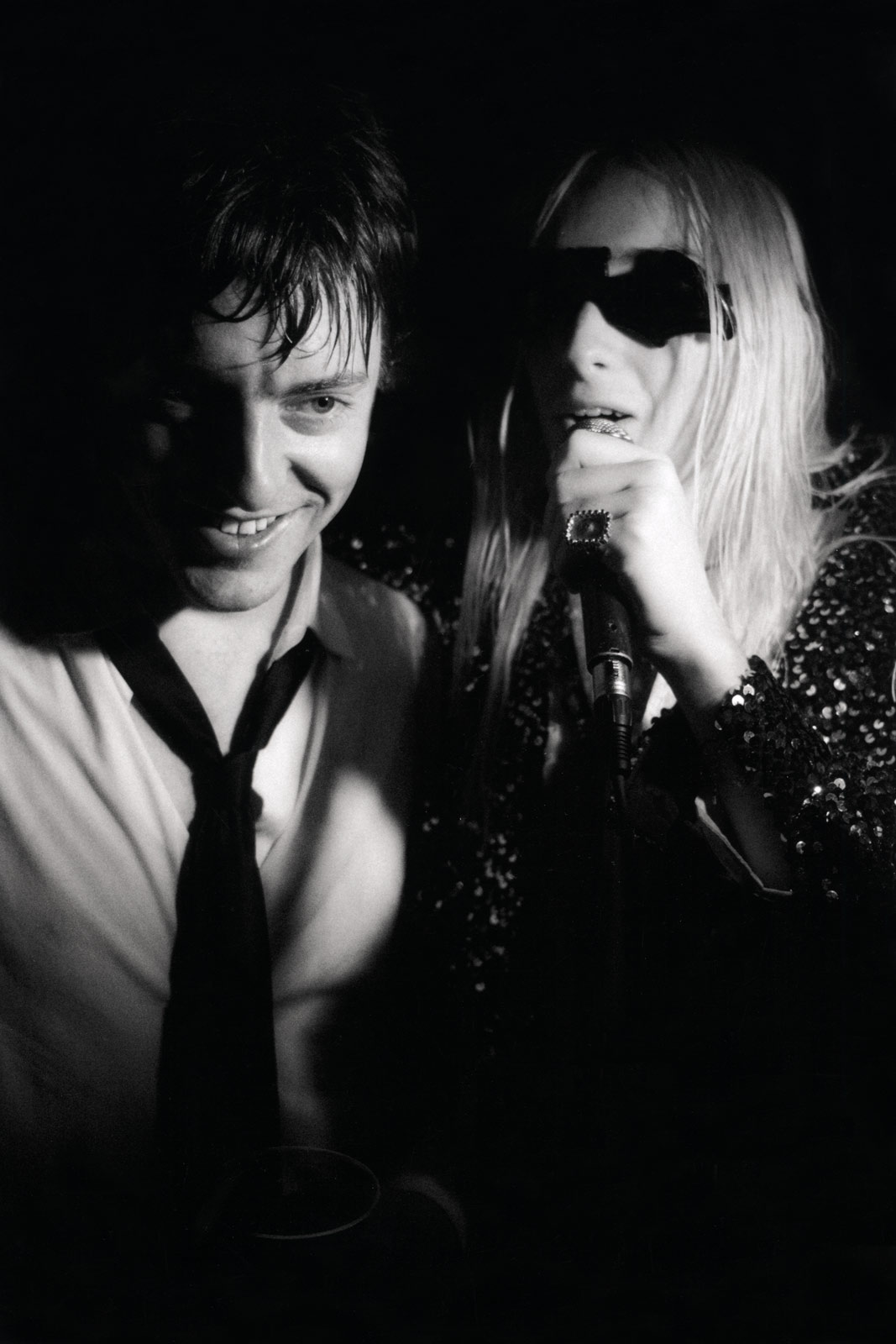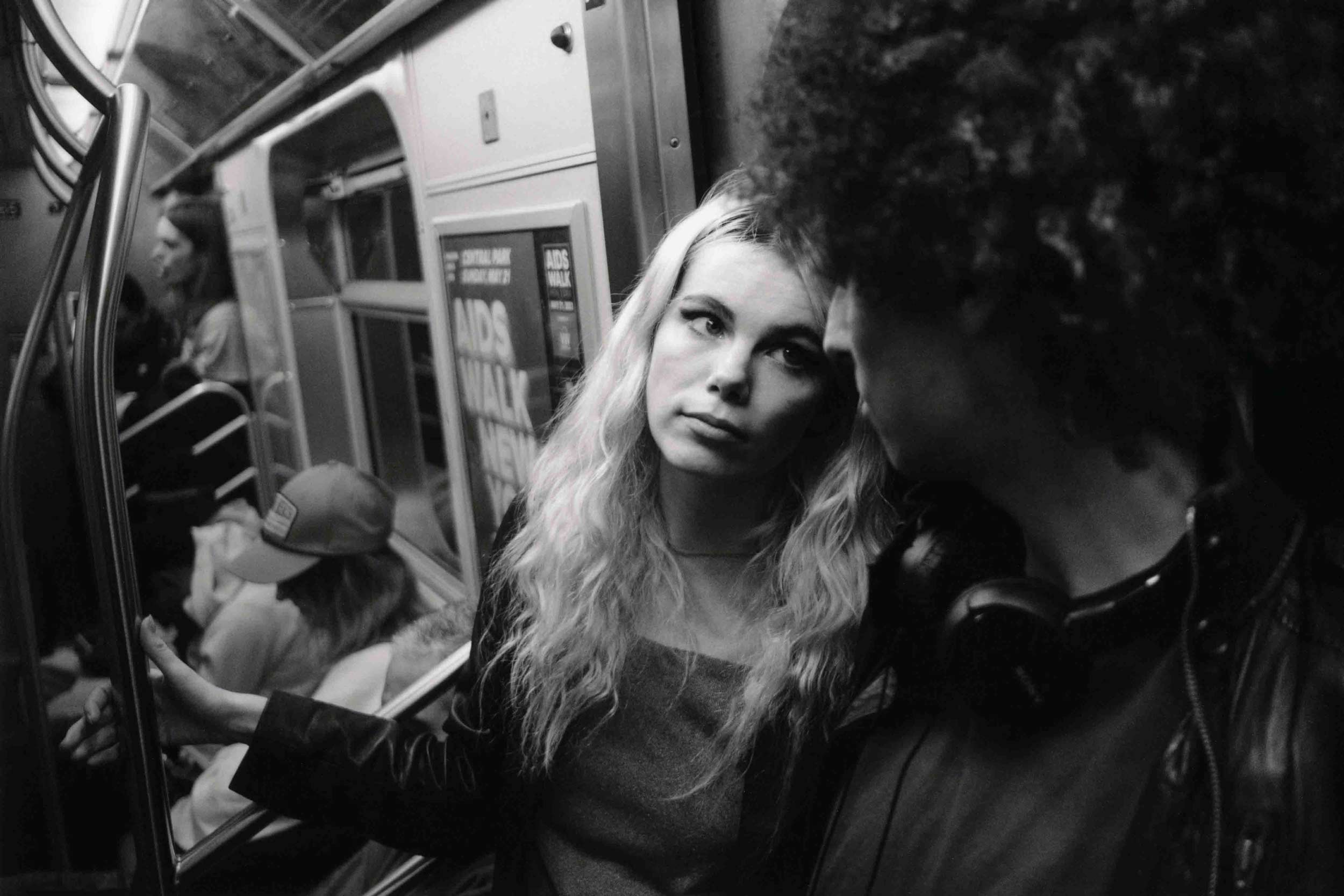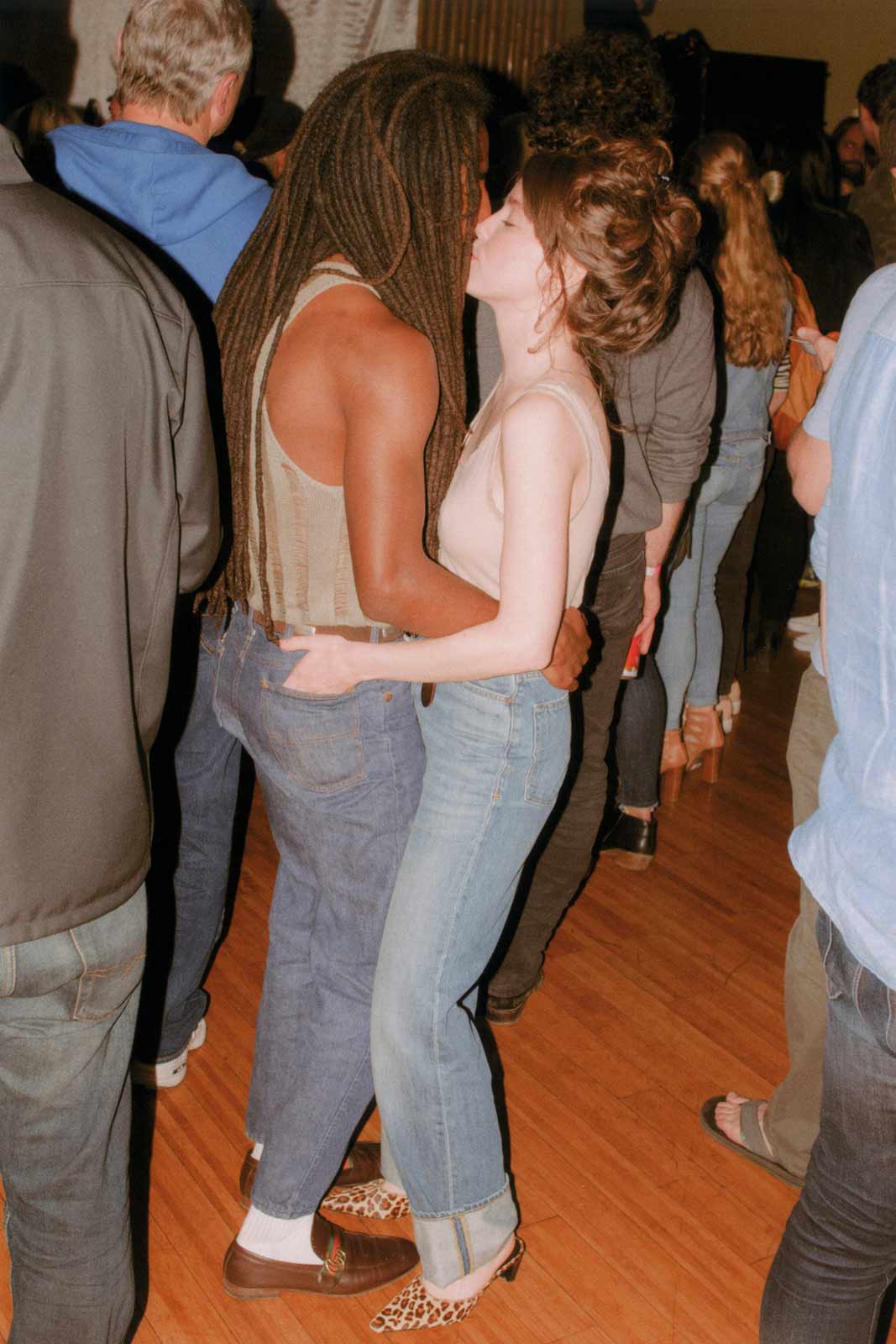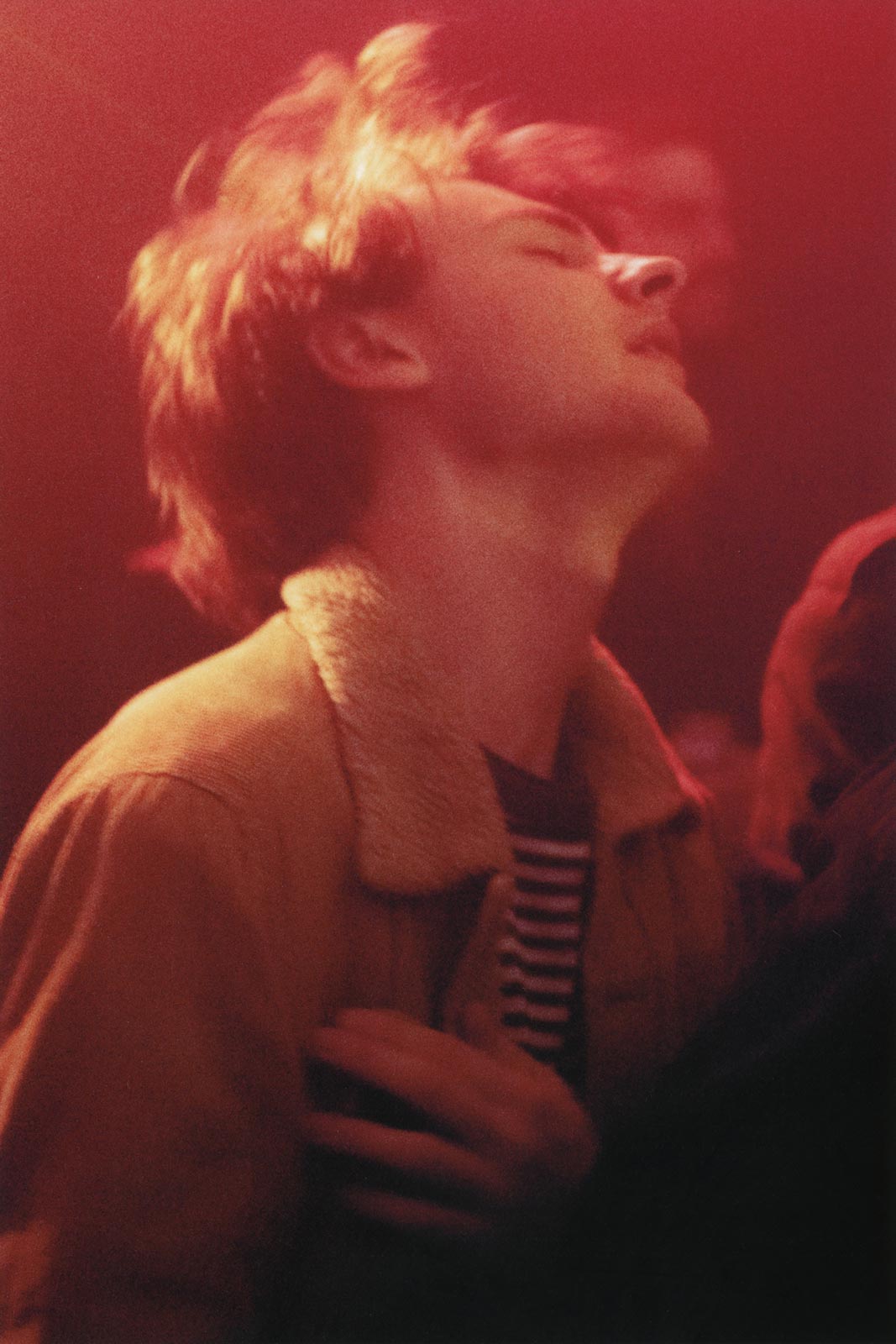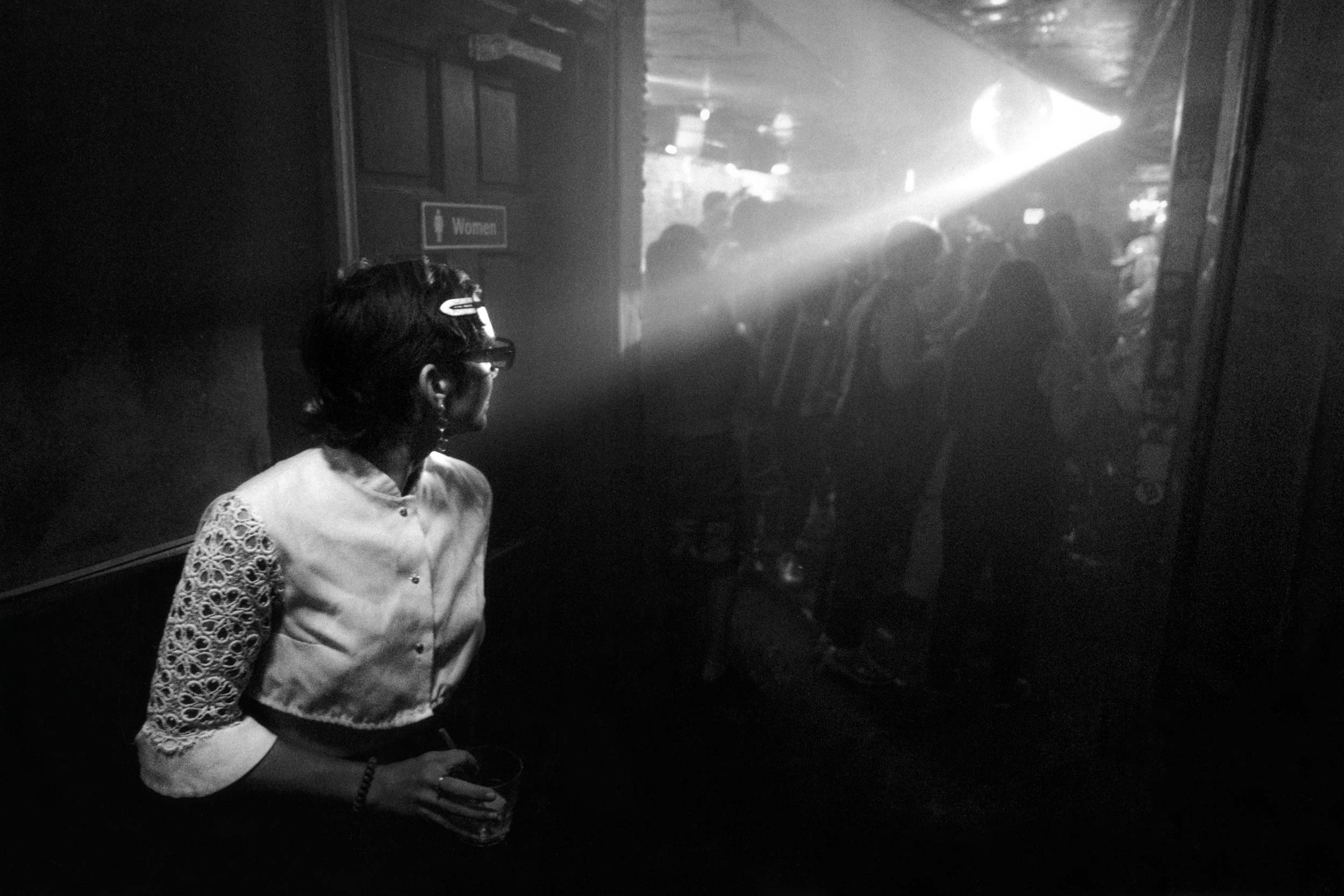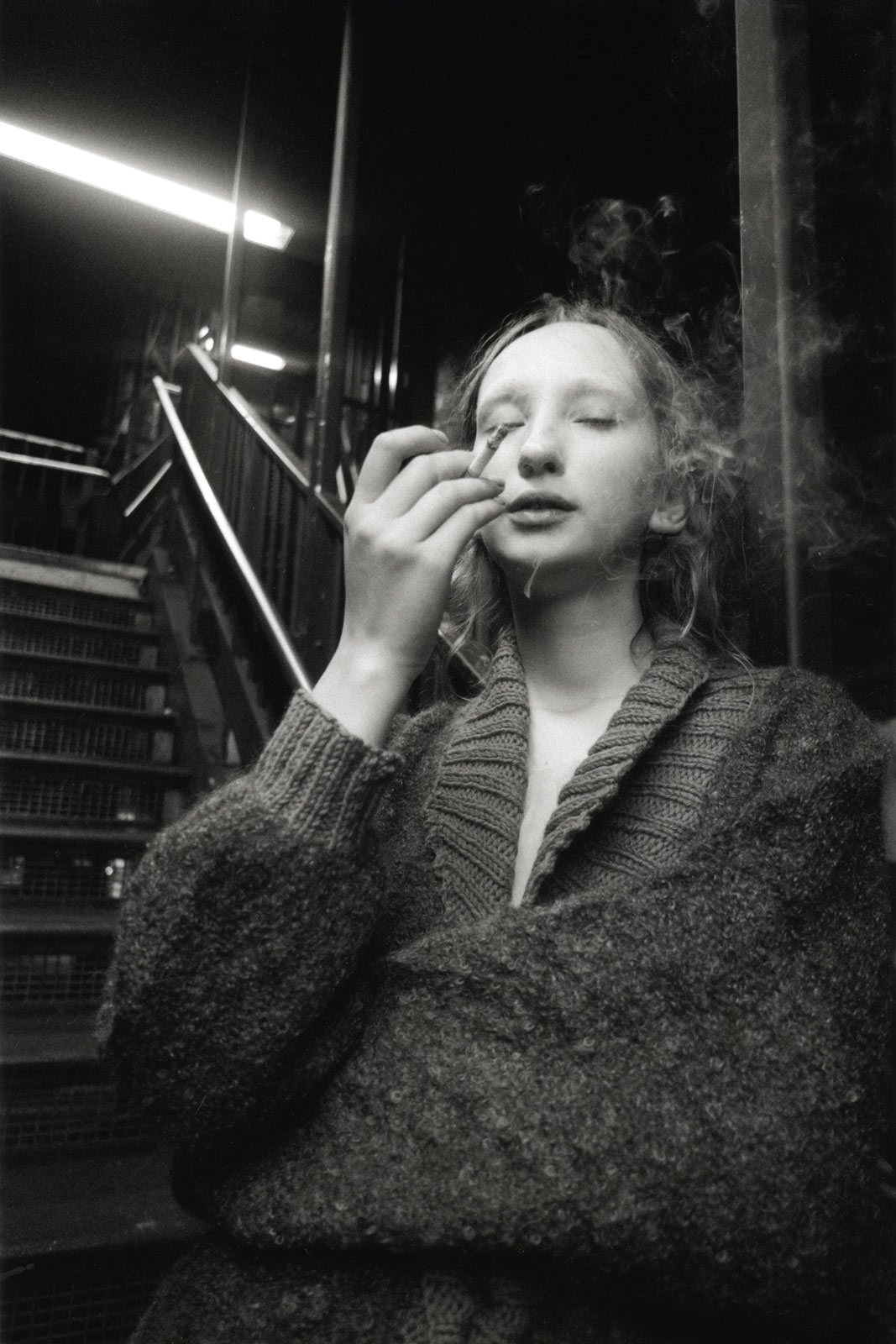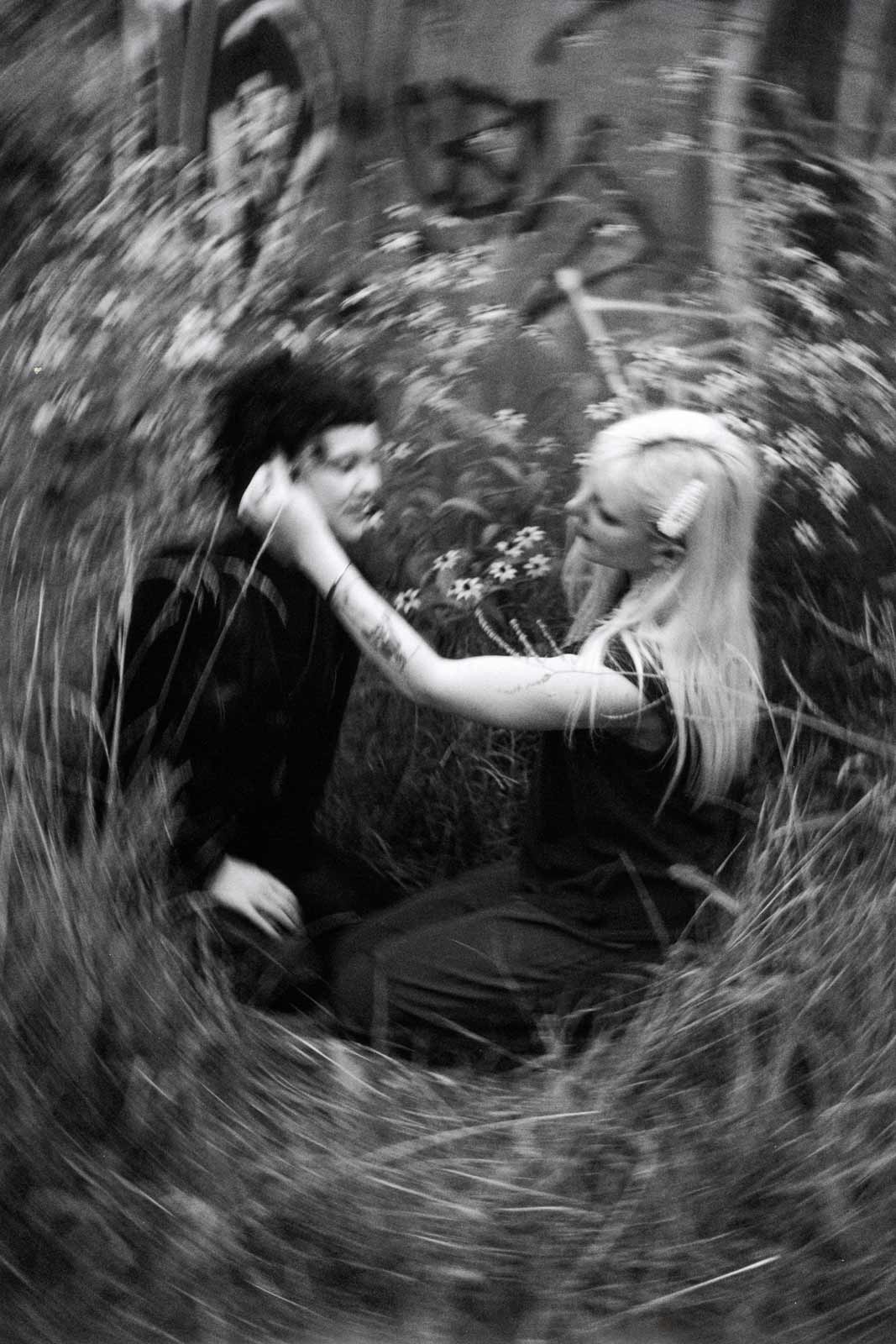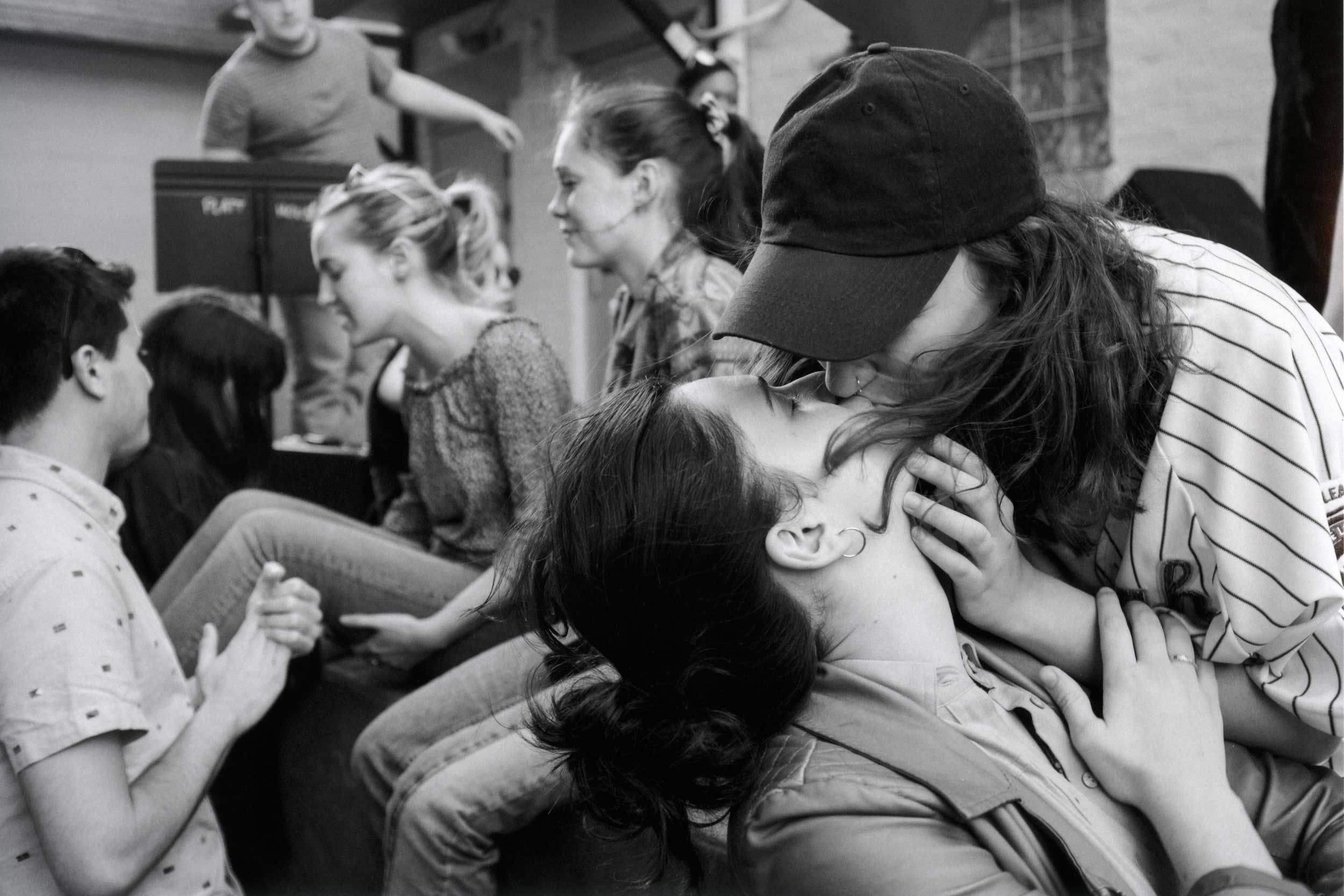With his series ‘Pom Poms,’ the photographer offers intimate glimpses of the lives of artists and the crowd, across three American cities
When Marcus Maddox sees live music, he’ll photograph the band like the rest of us, but then he’ll turn his camera to the audience. The show is the context; his real subject is the crowd and their relationships, interactions, expressions, and momentary dramas, during and long after the performance. “In my view, everything happening off-stage is an extension of the show; for example, hanging out with friends at someone’s apartment after the event, or traveling with lovers on the train to go home,” he explains. “I capture these moments using my intuition, then sequence those fragments into one cohesive whole. Ultimately, I want to show an unconventional collection of music photography from a specific place and time.”
Inspired by the work of Nan Goldin, Maddox has created a personal artistic record of three cities’ music scenes, organized into a trilogy called Pom Poms. “Overall, I am materializing a vision of friendship, romance, and style,” he notes. “As the scene hinges on relationships between artists and the people who go to see them, I want to carry on a sense of candor with this project, because frankly, I’m a lover of people.” The first book is a dreamy documentation of shows in Maddox’s hometown, Nashville, from 2016 to 2018. Philadelphia was just released in August, and New York is currently in progress, as he captures moments for artists like Porches, The Dare, sweet93, and Frost Children.
Because music and photography are so deeply intertwined in Maddox’s work, he has shared both a selection from Pom Poms and an accompanying playlist of songs that have inspired his work. “Listening to music is important for my process because it imbues me with a feeling that I want to get across visually,” he explains. “For example, dream pop, with its jangly guitars, inspired the bright photographic mood of Nashville. Slowcore music helped me embrace a more natural, sobering feeling in Philadelphia. In New York, the deep blacks and hard light are called forth, partly due to my love for darker melodic music. So my worldview shifts over time, ranging from light to dark.”
Maraya: Tell me about Pom Poms and a little background on the project.
Marcus: Pom Poms started in 2016, around the time that I started getting into photography. I got my first camera that year, and I started taking photography more seriously in college. One of the first events I ever shot was a concert; it was Chloe Kohanski. She was in a band called Cumberland Blue. Pom Poms started because I wanted to do something beyond music photography; I wanted to make it into art, somehow. I discovered Nan Goldin when I was in school at Middle Tennessee State University, and I saw how personal her work was, and how she was interested in relationships and her friends’ lives. I figured something I could do was observe the crowd; I wanted to look at the audience and not just take stereotypical performance photos. So, I started paying attention to things happening around the show. Pom Poms is a reference to cheerleaders’ tufts—it’s about the cheering crowd.
Maraya: I love that; I never made that connection.
Marcus: Yeah, it’s also an acronym. Pom Poms stands for ‘Pictures of Many People of Music Scenes.’
Maraya: Your first edition was centered in Nashville, and this edition that just came out is in Philly, and you have an upcoming one in New York. How has your practice as a photographer evolved over that time? What were the differences between each location?
Marcus: A lot of Pom Poms is about transformation, and it’s about my growth as a photographer. I’m from Nashville, and I started out very interested in creating my own world—using color and flash to create something that was different from what I was actually seeing. The world that I created in the first Pom Poms is a lot brighter, and probably more optimistic, than [reality]. The Nashville music scene had some grit to it, but I was more interested in joyous images. I was 22 at the time. I actually dropped out of school to start working on my own projects, and I wanted to feel optimistic. I was really into dream pop music at the time, too. I was listening to a lot of jangly, dreamy stuff like Alvvays and Beach Fossils.
When I moved to Philadelphia, I wanted to do something different. I switched to black and white because a lot of the cities on the East Coast have such a rich history. For me, it felt natural to see the East Coast in black and white. I wanted to take a more sophisticated approach to that scene. I didn’t want the photographs to be so flashy and driven by vanity and the outfits and the colors and the forms and the shapes. I wanted it to be more psychological. So, I turned to natural light for most of that project. I also got inspired by cinema. One film is The Night of the Hunter. James Agee wrote the screenplay for that, and it’s this noir, black-and-white film; it uses a lot of German expressionism elements. There are hard shadows, and the light is telling the story.
For New York, it’s taking shape at the moment, so I’m still thinking about it. I do want to go further with the black and white, but I want to print the book on black pages to give it a harsher look. Each book responds to the last, and by the time you get to the end of the series, there’s this whole arc that looks back at my whole personal experience in the music scene.
Maraya: That’s such a cool record for you to have. You alluded to the influence music and film have had on your work. I was wondering if you could expand on the different art forms that inspired you and shaped Pom Poms.
Marcus: Music has not only been important for the tone of Pom Poms, but also for the titles of the pictures. A lot of the captions in the back of the book are song lyrics. Some of them are from local musicians and some of them are from musicians I like, like Frank Ocean and Black Marble. I listen to local music and pay close attention to the lyrics to try to connect the world I’m photographing with the music that’s in the place I’m making the portrait of.
Maraya: If you could characterize each edition of Pom Poms with a type of music, what would they be?
Marcus: Pom Poms 1 would be like ‘Just Like Heaven’ by The Cure, a dreamy song about love. Pom Poms 2 would be a slow-core song, but it could also be a punk song because in the beginning—it’s very high-energy, but then it simmers down into a slow-core kind of tone. Pom Poms 3, it’s not definitive yet. But it’s looking like it’s half-electroclash, half-dark and dreamy, like ‘Wonder’ by sweet93.
Maraya: Can you talk about how poetry has shaped your work?
Marcus: Poetry has been really influential in the process of sequencing Pom Poms. I would say the biggest influence on me, in terms of poetry, has been the style called the ‘Greater Romantic Lyric,’ where writers would essentially write in a circle. They would use the déjà vu effect to talk about a certain scene in the beginning, then transition into their personal feelings about the scene, or something that has to do with it. At the end of the poem, they come back to another description of that initial scene—it rounds upon itself, but it’s in a different mood. They have a different insight on life because of the meditation they went through in the middle. That’s similar to what I’m trying to do with the sequence of the photos. There are poets who would write that way, like Percy Shelley and William Wordsworth.
Maraya: When you go out to shoot, what is happening in your mind? What are you looking for? What’s the thought process?
Marcus: I don’t necessarily have a plan; I’m not trying to get a specific shot of specific people. I’m basically keeping my mind open to experience. I know that I have a plan to make a book, but I never know what’s going to go in it, and I never know who I’m going to meet or what’s going to pull my heart strings or what I’m going to observe exactly. I’m just interested in people and relationships, friendships, romance, and music. I do get performance shots to add context to Pom Poms, but to me, the most critical images are those that show connections between people off-stage. And those moments can extend to times that are way after the show. We leave a show, we get on the train, and it’s very late at night—whatever the friend group I’m with is doing, whatever is happening… That, to me, is still the show photography. I just want to show people living their lives.
Maraya: One of the ways that you share your images with people is through these slideshows set to music. I was wondering if you could tell me why you like that format.
Marcus: I love that format because it makes the pictures feel more alive. I feel like today, with our technology, there’s a lot of doomscrolling and blasting through images without really taking them in. I feel like a slide show can give people a sense of pacing, and allow them to take the photograph in for what it really is, [taking in] the composition or the light or even the emotion that’s in the photograph. I always feel like people are more obligated to pay attention when they’re looking at a slideshow. But it’s a tremendous gift for anyone to give you their attention.



